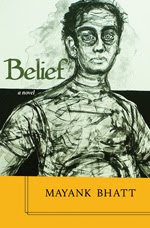Earlier this year, I wrote sample columns for a South Asian weekly and sent it to its editor following a brief chat. The weekly is part of a media conglomerate. I was told the final decision would be made by another editor. After waiting for a couple of months, I realize that the weekly is not interested in using them. Well, for whatever they're worth, I'm reproducing them here.
Riding MiWay’s route 42 is like taking a trip in South Asia
I don’t own a car, never have, never will. I live in Toronto and work in Brampton. I change three buses to go to work and three buses to return home. It takes me about an hour in the morning, and about hour-and-twenty-minutes in the evening. The highlight of my commute is the bus ride on the MiWay route 42, which I board at Airport Road.
Nearly all commuters in the morning (around 7:15 am) are South Asians, and nearly all of them are busy chatting on their phone with their dear ones “back home”. One can hear different South Asian languages, and often multiple dialect of a language. News and information, joys and sorrows and a bit of gossip, are shared.
Daughters complain about their in-laws to their mothers on the phone, international students lie or boast to their parents, depending upon their latest results. Remittance details are given or taken down, and on occasions, marriage proposals are discussed, with photos shared on WhatsApp.
The best (or the worst, if you’re not a South Asian) part of the commute on the bus is the pungent smell of South Asian curry that most commuters carry in their lunch bags. South Asian curry is an acquired taste. To most non-South Asians, it’s only hot and spicy. It has a distinct odour that often makes stomachs churn involuntarily and violently.
In winters, when the temperature is deep in the minuses, and the temperature inside the bus is what you’d find in South Asian tropics (touching +30° C), the bus smells like a South Asian kitchen. I’ve seen non-South Asians gag as they enter the bus and breathe deeply as they alight, having held their breath for long.
So, if you’re feeling homesick and feel like going “back home”, just take a trip in MiWay bus’s route 42.



